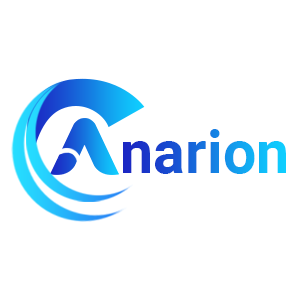Openfire VM by Anarion Technologies
Openfire is a powerful open-source, real-time collaboration server built on the XMPP (Extensible Messaging and Presence Protocol). It is designed to facilitate seamless communication through features such as instant messaging, group chats, file sharing, and presence notifications. Openfire is ideal for organizations, communities, and individuals seeking a secure and scalable communication platform. Its lightweight design and intuitive setup process make it easy to deploy, even for users with minimal technical expertise.
The server comes with a web-based administration console that simplifies management tasks, including configuring server settings, monitoring active sessions, and managing users and chat groups. Openfire supports integration with LDAP and Active Directory, allowing organizations to centralize user authentication and streamline identity management.
Security is a key focus of Openfire, with support for TLS and SASL protocols to ensure encrypted communication and secure connections. It is also highly extensible, with a robust plugin system enabling additional functionalities such as message archiving, web conferencing, and integration with external applications.
Designed to handle both small teams and large-scale deployments, Openfire provides a versatile and reliable solution for private and professional messaging needs. Whether for corporate environments, educational institutions, or community projects, Openfire stands out as a feature-rich and dependable platform.
To subscribe to this product from Azure Marketplace and initiate an instance using the Azure compute service, follow these steps:
1. Navigate to Azure Marketplace and subscribe to the desired product.
2. Search for “virtual machines” and select “Virtual machines” under Services.
3. Click on “Add” in the Virtual machines page, which will lead you to the Create a virtual machine page.
4. In the Basics tab:
- Ensure the correct subscription is chosen under Project details.
- Opt for creating a new resource group by selecting “Create new resource group” and name it as “myResourceGroup.”
5. Under Instance details:
- Enter “myVM” as the Virtual machine name.
- Choose “East US” as the Region.
- Select “Ubuntu 18.04 LTS” as the Image.
- Leave other settings as default.
6. For Administrator account:
- Pick “SSH public key.”
- Provide your user name and paste your public key, ensuring no leading or trailing white spaces.
7. Under Inbound port rules > Public inbound ports:
- Choose “Allow selected ports.”
- Select “SSH (22)” and “HTTP (80)” from the drop-down.
8. Keep the remaining settings at their defaults and click on “Review + create” at the bottom of the page.
9. The “Create a virtual machine” page will display the details of the VM you’re about to create. Once ready, click on “Create.”
10. The deployment process will take a few minutes. Once it’s finished, proceed to the next section.
To connect to the virtual machine:
1. Access the overview page of your VM and click on “Connect.”
2. On the “Connect to virtual machine” page:
- Keep the default options for connecting via IP address over port 22.
- A connection command for logging in will be displayed. Click the button to copy the command. Here’s an example of what the SSH connection command looks like:
“`
ssh azureuser@10.111.12.123
“`
3. Using the same bash shell that you used to generate your SSH key pair, you can either reopen the Cloud Shell by selecting >_ again
or going to https://shell.azure.com/bash.
4. Paste the SSH connection command into the shell to initiate an SSH session.
Usage/Deployment Instructions
Anarion Technologies – Openfire
Note: Search product on Azure marketplace and click on “Get it now”
Click on Continue
Click on Create
Creating a Virtual Machine, enter or select appropriate values for zone, machine type, resource group and so on as per your choice.
After Process of Create Virtual Machine. You have got an Option Go to Resource Group
Click Go to Resource Group
Click on the Network Security Group: openfire–nsg
Click on Inbound Security Rule
Click on Add
Add Port
Destination Port Ranges Section* (where default value is 8080)
9090
Select Protocol as TCP
Option Action is to be Allow
Click on Add
Click on Refresh
Copy the Public IP Address
http://”Instance IP Address:9090
Choose your native language.
Configure the server settings by adding the XMPP domain name, server hostname, admin console port, and a secure console port.
Next, choose the way you like to connect the Openfire database.
Database creds:
DB Name: openfire
Username: openfireuser
Password: Admin@123
Setup your profile type.
Add the admin email address and password.
After completing the setup, login to the Openfire web interface by entering the admin email and password.
Here, Welcome to the Dashboard of Openfire.
ThankYou!!
All your queries are important to us. Please feel free to connect.
24X7 support provided for all the customers.
We are happy to help you.
Contact Number: +1 (415) 800-4585
Support E-mail: support@anariontech.com


